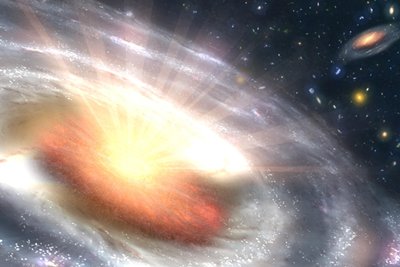 Hypergalaxy is a system that consists of a dominant spiral galaxy that is surrounded by a cloud of smaller satellite galaxies which are often elliptical. The Milky Way in which Earth is located and the Andromeda Galaxy are examples of hypergalaxies.
Hypergalaxy is a system that consists of a dominant spiral galaxy that is surrounded by a cloud of smaller satellite galaxies which are often elliptical. The Milky Way in which Earth is located and the Andromeda Galaxy are examples of hypergalaxies.
The Milky Way is a system that is said to contain up to 400 billion stars, the Sun is one of them. It is considered as a normal spiral galaxy. The Milky Way’s diameter is presumed to be at less than 100,000 light years. It has an obscure yet very strong source of energy at its center that is said to emit infrared radiation. A tenth of the galaxy’s total mass is said to comprise interstellar gas and dust. The Milky Way is the second largest in the Local Group.
Another example of a hypergalaxy is the Andromeda Galaxy. It is a major galaxy that is said to be about 2.2 million light years from the Earth. It is the largest galaxy in the Local Group, in which the Milky Way is also a member. It is seen by the naked eye as a nebulous patch in the Andromeda Constellation. The Andromeda Galaxy is also referred to as the Great Spiral.
In simpler terms, a hypergalaxy is a collection of galaxies wherein the most dominant are spiral galaxies.
The Andromeda Galaxy at a glance
